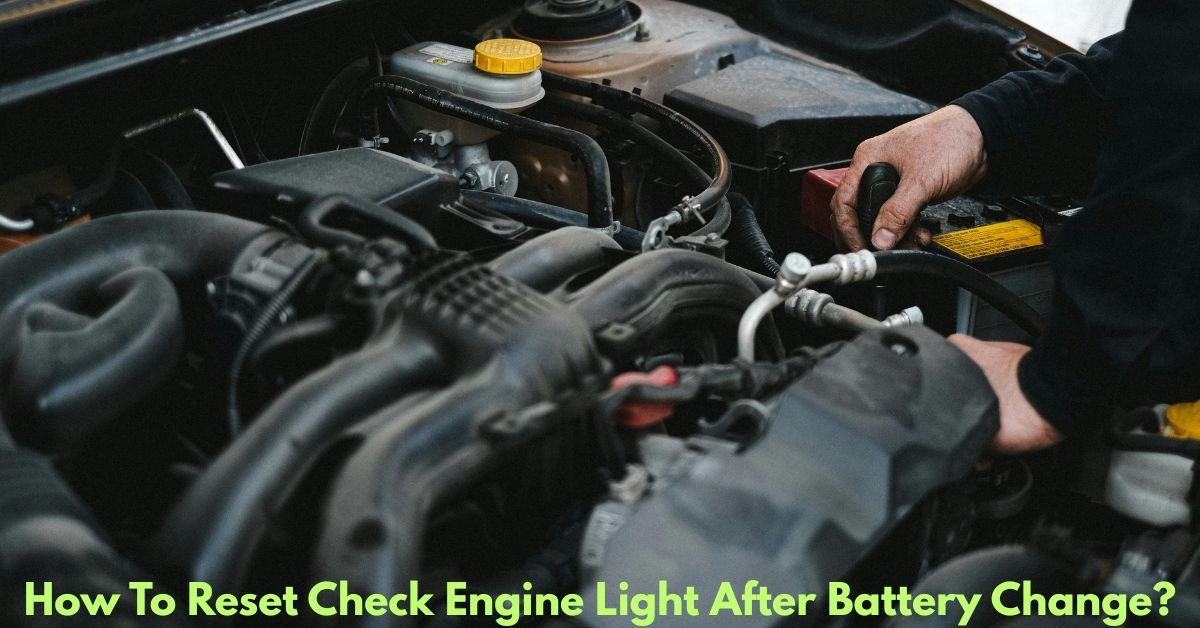If you’ve recently replaced your car battery and noticed the check engine light (CEL) glowing on your dashboard, you’re not alone. This little light can be a source of major frustration, especially after routine maintenance like a battery swap. The good news is that the issue may not be serious — and resetting the check engine light can often be a straightforward process.
In this blog post, we’ll explain why the check engine light might come on after a battery change, and provide several effective methods for resetting it safely.
How to Reset the Check Engine Light After a Battery Change
Why Does the Check Engine Light Turn On After a Battery Change?
There are a few reasons why a check engine light might appear after replacing the battery:
- Temporary ECU Confusion: Your car’s engine control unit (ECU) or computer relies on consistent electrical signals. Disconnecting the battery resets these systems. When power is restored, the ECU may need time to recalibrate, and it can trigger a warning light in the meantime.
- Loose or Disconnected Components: During battery replacement, sensors or wiring might be inadvertently disturbed. A loose sensor connector, particularly one related to the emissions system, could trigger a CEL.
- Stored Trouble Codes: The battery change might not erase pre-existing trouble codes, so the light could reappear if the underlying issue wasn’t resolved.
- System Self-Test: After battery installation, your car may need to go through a drive cycle (more on that below) for the systems to reinitialize. The check engine light might remain on until this process completes.
Step-by-Step Guide to Reset the Check Engine Light
1. Use an OBD-II Scanner (Most Reliable)
The easiest and most accurate way to reset the CEL is by using an OBD-II (On-Board Diagnostics) scanner. Here’s how:
- Step 1: Plug the scanner into your vehicle’s OBD-II port (usually located beneath the steering wheel).
- Step 2: Don’t start the engine; instead, turn on the ignition.
- Step 3: Follow the scanner’s instructions to read and clear trouble codes.
- Step 4: If the issue is minor or resolved, the CEL should turn off.
Tip: Many auto parts stores offer free diagnostic scanning services.
2. Perform a Drive Cycle
If you don’t have an OBD-II scanner, simply driving your car for a while might reset the light.
- Drive for about 50 to 100 miles over multiple trips, with a mix of city and highway speeds.
- The ECU monitors all systems during this time, and if no issues are detected, it may automatically turn off the check engine light.
Note: If the light stays on, a deeper issue might be present.
Must Read: How To Get Engine Oil Out Of Carpet?

3. Battery Disconnect Method
Though not as reliable, this method can sometimes reset the ECU and CEL:
- Step 1: After turning off the engine, take the key out.
- Step 2: Disconnect the negative (-) terminal of the battery.
- Step 3: Wait for 15–30 minutes.
- Step 4: Reconnect the terminal and start the car.
This may clear temporary codes, but if the underlying problem persists, the light will return.
4. Inspect for Loose Sensors or Caps
Sometimes, the CEL is triggered by a loose gas cap or a disconnected sensor:
- Make sure the gas cap is securely fastened until a click sounds.
- Look under the hood to make sure mass airflow sensors, vacuum hoses, and battery cables are secure.
When to See a Mechanic
If you’ve tried the above methods and the check engine light remains on — or starts flashing — it’s time to seek professional help. A persistent or blinking CEL can indicate:
- Faulty oxygen sensor
- Catalytic converter issues
- Engine misfire
- Transmission or fuel system problems
Delaying diagnosis could lead to bigger (and more expensive) repairs.
Final Thoughts
The check engine light popping up after a battery change is often nothing to worry about. In many cases, it’s just your car’s computer recalibrating. However, ignoring it completely can be risky. Taking a few minutes to diagnose and reset the light ensures your vehicle runs safely and efficiently.
Whether you choose to reset it yourself or get professional help, addressing the CEL promptly gives you peace of mind and keeps your car in top shape.
